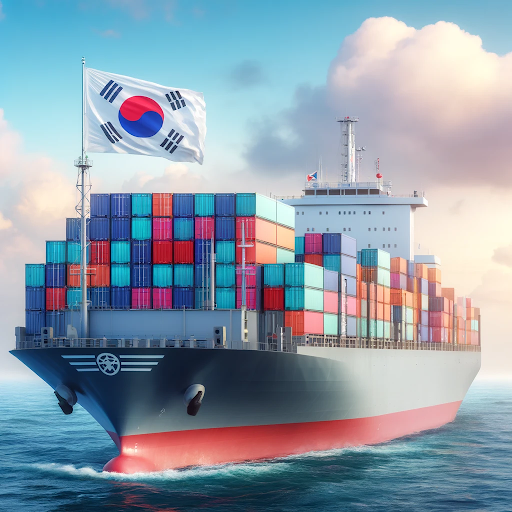South Korea Allocates $2.5B to Grow Local Container Lines

The South Korean government has announced plans to invest approximately US$2.5 billion to expand the container shipping fleet of locally owned companies, including SM Line and other feeder operators, by 100,000 TEUs.
The funding is aimed at bolstering the fleets of several companies, such as SM Merchant Marine (also known as SM Line), Sinokor Merchant Marine, Korea Marine Transport Company (KMTC Line), Pan Ocean, CK Line, Namsung Shipping, and Dongjin Shipping, which currently have a total capacity of around 400,000 TEUs.
The Ministry of Oceans and Fisheries expressed its intent, saying, “We hope to increase these operators’ competitiveness in the intra-Asia shipping sector. Furthermore, we’re supporting the development of new routes for shipping companies operating intra-Asia routes where competition is intensifying.”
The initiative includes financial mechanisms like the Korea Ocean Business Corporation (KOBC) purchasing green bonds from these shipping companies or providing loans with reduced interest rates for building eco-friendly ships. The state-controlled Korea Development Bank (KDB) along with KOBC may also invest in a portion of these environmentally friendly newbuilds.
This move comes as trade between South Korea and the ASEAN (Association of Southeast Asian Nations) nations is showing robust growth. According to Korea Customs, the trade volume of containers between South Korea and ASEAN countries in the first quarter of 2024 increased by 14% year-over-year, totaling 1,008,682 TEUs.
This trend suggests that the annual container flow between South Korea and ASEAN could surpass 4 million TEUs this year, marking a 52% increase from a decade ago.
Despite these growing trade volumes, profits for South Korean intra-Asia shipping lines have not seen a corresponding increase, primarily due to fierce competition from major international operators like Maersk Sealand and CMA CGM.
These mainline operators deploy larger vessels, ranging from 4,000 to 5,000 TEU capacity, which offer lower slot costs compared to the typically smaller vessels of South Korean feeder operators.
This strategic investment aligns with President Yoon Suk-yeol's broader goal to expand South Korea's container shipping capacity to 2 million TEUs by 2030, a vision he shared during the inauguration of Busan port’s seventh container terminal on April 5.
Additionally, on April 15, HMM, South Korea’s flagship carrier, announced its plan to grow its fleet capacity to 1.5 million TEUs by 2026, an increase from its earlier target of 1.2 million TEUs.